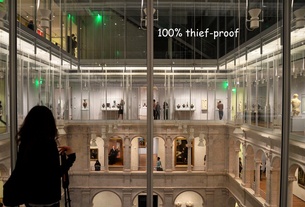{shortcode-abbc25199304960017e84bf73e8f4c6b12961d1e}
When a Harvard College junior was handcuffed and loaded into a Harvard University Police Department van outside of Massachusetts Hall, observers knew that the arrest, which ended a blockade of top administrators’ offices, indicated that on-campus activism for fossil fuel divestment had so far reached its peak.
The increasingly visible activism, which mirrors similar movements across the country, comes after a year in which the University announced a series of high-profile, sustainability-focused initiatives—first the creation of a vice president of sustainable investing role within the Harvard Management Company, which invests Harvard’s endowment, and, more recently, Harvard’s signature on the United Nations-backed Principles for Responsible Investment.
Yet some members of the community remain unsatisfied, saying that Harvard, in the process of balancing sustainability and financial concerns, is ignoring a moral obligation to remove itself from a fossil fuel industry causing harm to humanity on a global scale. The decision to divest, they say, would follow in the footsteps of Harvard’s decision to do so for social or political reasons on previous occasions, some of which were spurred by student and alumni activism.
This disconnect between a university that believes it is taking significant strides on the sustainability front and members of the community that continue to push for more—is rooted in two fundamentally different conceptions of the meaning of responsible investment. Widening the gap is what some characterize as an eroding mechanism for incorporating student feedback into investment decisions.
THE BOTTOM LINE
University leaders have framed HMC’s commitment to environmental, social, and governance, or ESG, considerations not as a broad moral or political statement but instead as a prudent financial decision, especially in the context of the company’s status as a long-term investor of Harvard’s $32.7 billion endowment, which is the largest of any institution of higher education in the world.
{shortcode-05d13bd858337d3397fc29c8204feb9797d0af0a}
When it was founded in 1974, HMC was tasked with managing a significant portion of the University’s endowment in-house, with the belief that their own managers could create higher returns than the traditional third-party asset managers. Since then, the company has long emphasized alternative asset classes, like private equity, natural resources, and real estate—a sharp departure from the traditional bond and stock-heavy portfolios of most university endowments.
This unique history has shaped how HMC has answered the challenge of the responsible investment movement.
Today, HMC leaders say that they consider environmental, social, and governance factors as some among many indicators of the long-term profitability of an investment.
For example, according to Jameela Pedicini, the recently hired vice president for sustainable investing at HMC, “Health and safety issues and also labor standards can play a real role in how you value a company, and ne can see that one company that has ESG performance, so here, having a good health and safety record and good labor relations, was actually performing better than a company that didn’t.”
Pedicini’s position, which was created last February, is often cited as evidence of the company’s increasing commitment to ESG factors. She says that she is responsible for reviewing Harvard’s investments with an ESG lens and advising HMC investment managers on sustainable practices. Exactly what these practices entail, she adds, differs depending on the specific asset class.


